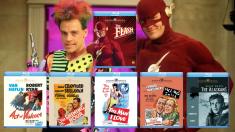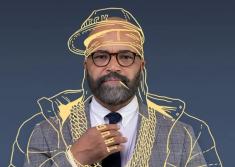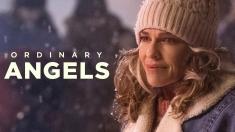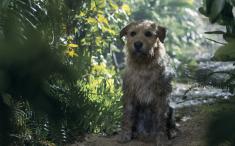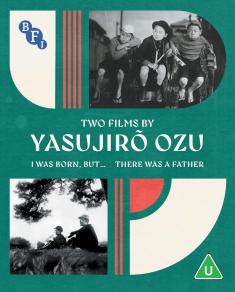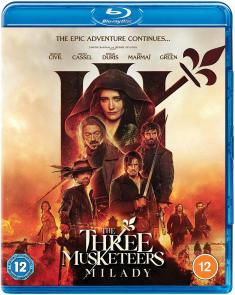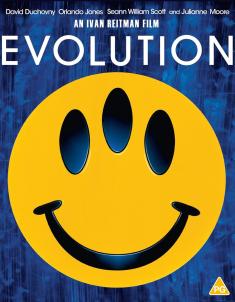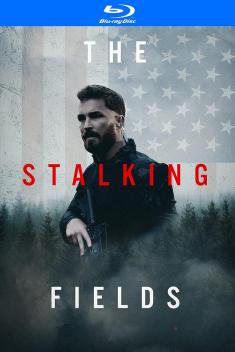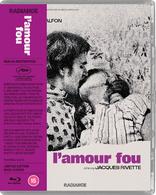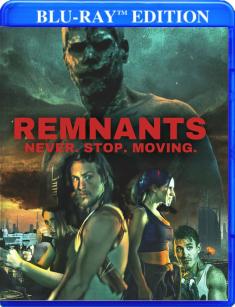Back to the Future: 25th Anniversary Trilogy
Overview -
Presented by Steven Spielberg, directed by Oscar® winner Robert Zemeckis and starring time travelers Michael J. Fox and Christopher Lloyd, the phenomenally popular Back To The Future films literally changed the future of the adventure movie genre. Now, this unprecedented Back To The Future Trilogy immerses you in all the breathtaking action, outrageous comedy and sheer moviemaking magic of one of the most brilliantly inventive, wildly entertaining motion picture triumphs in Hollywood history!
Storyline: Our Reviewer's Take

There are a few films that I'd consider a big part of my youth. Many of my memories growing up in the 80s involve casual scenes sitting in front of a large Zenith console. You know the ones, with the gaudy wood paneling all around and the stereo speakers on either side. On that, I made countless viewings of 'The Rocky Horror Picture Show,' the first two 'Indiana Jones' movies, 'Grease' and 'Back to the Future.' Of those, the adventure of a teen musician traveling through time was the most awesome thing ever! I couldn't get enough of it. I simply cherished the sci-fi comedy as much as any pre-adolescent boy could. From the story and characters to the look and special effects, 'Back to the Future' was the best movie ever made. Next to 'Raiders of the Lost Ark,' of course. And if you asked me to pinpoint the moment I fell in love with movie-magic, this would probably be it.
The concept is deceptively simple, but something most people can easily relate to. Many have probably even imagined it at least once in their lifetime. Producer and co-writer Bob Gale was inspired with the thought after discovering his father's yearbook. What if you could hang out with your parents when they were teenagers and discover they were drastically different from the adults they grew into? He shared the pondering with friend and director Robert Zemeckis. Together, they wrote the screenplay, and with the help of friend Steven Spielberg, 'Back to the Future' was quickly on its way to becoming one of the most beloved movies of the decade. The entire plot revolves around this straightforward, nearly universal idea. And the script is genius in conveying this without making it blatantly obvious, practically perfect in its structure and delivery.
The audience quickly identifies with Marty McFly (Michael J. Fox) not only because he's the first character we see, but also for his struggles in school and the way he talks about his parents long before we meet them. He's an average teen with dreams of someday becoming a rock star. His audition for the high school dance is hilarious since Huey Lewis is the dorky-looking judge who tells Marty's band they're too loud. While expressing what a downer the adults are, never encouraging him to pursue his goals, Marty sums up the story's theme wonderfully when he thinks his mother must have been a nun. It's difficult to imagine our boring, square, unhip parents as teenagers or that they knew anything about what's cool, fun, and stylish. The kids of the past were never as lively and rebellious as they are in my generation is the typical mindset.
And therein lies the brilliance of 'Back to the Future.' The skeptical teen accidentally travels back in time to when his parents were of similar age. Although the reasoning behind Marty landing in 1955 is simple arithmetic, the period couldn't be any more ideal because the era essentially gave rise to teenagers, and it's the decade that originated rock 'n' roll. It also coincided with a popular trend of the 80s, of looking back to the 1950s with loving nostalgia. In that sense, the movie almost offers a fun and quirky remembrance of that generation, and the filmmakers throw in numerous cultural gags while Marty tries to repair the timeline he's disrupted in his travels. 'Back to the Future' effectively combines fantasy and science fiction with elements of the teen comedy, creating a remarkably charming and memorable centerpiece of 80s pop culture.

Another big part of the film's success is without a doubt the excellent and memorable performances of the cast, especially Michael J. Fox and Christopher Lloyd. At the time, Lloyd was an unknown to younger audiences, but everyone knew precisely who the uptight, Young Republican Alex P. Keaton was. Playing against type, Fox is believable and comical in the role, and likely a major reason why many teens flooded theaters. We may not have been familiar with Lloyd when the movie premiered, but today, the actor will forever be remembered for his portrayal of Doc Brown. He's charismatic and amusing, keeping viewers glued to the screen, waiting for whatever bizarre phrase he'll say next. Marty's friendship with the wacky scientist feels oddly genuine and realistic, which is essential for making the entire series work. And the two actors succeed without fault in this department, making us want to see more of their madcap adventures.
Originally, Zemeckis and Gale wanted John Lithgow in the role of the wild-hair scientist, but schedule conflicts made it possible for Lloyd to take over. The same issue arose when the creators wanted to cast Fox, but his commitments to the 'Family Ties' series made it impossible when shooting was to begin. Filmmakers, then, asked Eric Stoltz ('Some Kind of Wonderful') to step in after watching his performance in 'Mask.' After a few weeks of filming, it was decided the young promising actor was simply not right in the part, lacking the kind of comic timing required of the character. In interviews, everyone agreed Stoltz was too dramatic as Marty McFly, so they parted ways amicably. Coincidentally, Fox's schedule became more flexible and was able to star after all. Looking back, one can only imagine what type of movie this could have been. (Movie Rating: 5/5)
For the sequel, that close friendship between Lloyd and Fox remains an integral part of the story as Doc shows sincere concern about Marty and his family's future. The two friends seem to grow closer than ever as they work together in trying to stop Biff Tannen (Thomas F. Wilson) from changing the course of history. Tagging along for this second journey in time is Jennifer (Elisabeth Shue), since it also concerns her according to Doc. The gang travels to 2015, five years from now, where the only thing filmmakers predicated accurately is a nostalgia for the 1980s. While Marty succeeds at preventing the mistakes of his children, both played comically by Fox, old Biff steals the DeLorean to give his younger self a financial advantage with the help of a sports almanac. Crashing into an alternate 1985, Doc and Marty must revisit the events of part one and return the timeline to its proper order.

Granted, Part II doesn't really live up to the original, but it's still an entertaining continuation. I recall watching the VHS of the first movie with the bold letters "To Be Continued" right before the closing credits and imagining where the two friends would travel next. The sequel didn't quite satisfy expectations, but it's still fun envisioning 30 years into the future, plunging into an alternate reality and then forced back to 1955. So as to not mistakenly feel like a cop out in revisiting the first movie, most of the story's charm works as a different point of view to the original. It's offers a delightful and amusing joyride while avoiding a time paradox. Logically, the fact that Marty and the Doc accidentally interact with people of the past should be enough to leave an unpredictable impact on the future. But with endless gags, setups and payoffs to divert us from pondering such conundrums, we simply sit back and enjoy the silliness into Part III. (Movie Rating: 3.5/5)
If 'Back to the Future' could be viewed as a nostalgic look at 1950s pop culture and the sequel as homage to the science fiction genre, then the third and final installment to the series is a loving tribute to the western. As a devoted fan of the genre, this last entry in the now-classic film series in my book ranks higher than the second movie. And like the original exploring the decade that introduced rock 'n' roll, this story has fun in the epoch that gave rise to science fiction novels with several mentions of the French author Jules Verne. After watching the previous two, seeing this combination of fantasy meets the American West can seem a bit awkward and rather outrageous. But with that little historical tidbit being alluded to by Doc and his love interest, Clara (Mary Steenburgen), the plot feels right at home with the six-shooters, train robberies, and damsels in distress.

The best part for this fanatic of the genre and the comedy series is watching a tongue-in-cheek encounter between the 1950s romanticized view of the west and the more realistic portrayal of outlaws from Italian westerns. This is most apparent in the way Doc dresses Marty in the silly cowboy outfit before traveling to 1885. Once there, he is gawked at as if the circus were in town. Even funnier is Marty thinking the name Clint Eastwood universally epitomizes toughness. One of the more clever parts is having the DeLorean drive directly into the movie screen at the drive-in. For his final journey across time, Marty not only travels into the past, but literally jumps into the movies. Along with a multitude of sight gags referencing the future, like the Frisbee pie tin, 'Back to the Future Part III' is a rowdy good time and an exciting conclusion to one of the coolest and often celebrated trilogies in motion picture history. (Movie Rating: 4/5)
25 years later, the 'Back to the Future' series continues to capture the imagination and deliver the laughter. It's possible some of its enjoyment is partly nostalgic. But it's also likely these really are well-made, entertaining and highly creative films that haven't lost any of their fun. And in this era of remakes and reimaginings flooding theaters, revisiting older movies somehow makes us forget that Hollywood seems to lack any vision and originality right now, that it fails to make us believe in the magic anymore. Nearly 30 years later, the 'Back to the Future' trilogy endures as a better movie-going experience than many, many other movies of late.
The Blu-ray: Vital Disc Stats
Universal Studios Home Entertainment brings the 'Back to the Future' trilogy to Blu-ray in a 25th Anniversary, six-disc package set. The glossy, cardboard slipcover is kept closed with a Velcro dot, and once opened, owners can read a breakdown on the supplemental material available. Inside, we find a gatefold cardboard box with three, clear-plastic panels. Each one holds two discs — the Blu-ray sits comfortably atop a Digital Copy — and they are a bit tricky to remove. Place your thumb in the middle ring and your index finger on the top edge of the disc. Push down and carefully lift using your index finger. If not for that maneuver, this would be a pretty cool package.
The movies along with relevant bonus materials are contained on three Region Free, BD50s discs. At startup, they each commence with a series of BD-Live related trailers and promos, such as 'Get Him to the Greek,' 'Robin Hood (2010),' and 'Psycho.' Afterwards, viewers find a standard set of menu selections while full-motion clips play in the background, accompanied by the iconic score and the DeLorean racing across the screen.
Video Review

One of the most anticipated movie trilogies finally arrives on Blu-ray with a wonderful and impressive 1080p/VC-1 encode (1.85:1), except for Part III, which has been done using the AVC MPEG-4 encode. According to an interview, producer Bob Gale participated in the restoration process, which was done from an interpositive using a 2k resolution scan. And the results are first-rate, as the movies have never looked this good on any other format. Since all three films received the same treatment and appear identical in terms of quality, they are being graded as one complete package.
All three movies display great definition and clarity, whether we're watching Marty narrowly escape the clutches of Biff/Griff in the town square or riding the wild plains of the Wild West. Granted, there is some minor noise reduction applied and some slight digital tampering used to sharpen and clean the picture a bit, but it's nothing so objectionable as to ruin the quality of the film. We've seen much worse done to other favorites, and only the most discerning of viewers are likely to notice. The image still retains a very fine layer of grain and shows several strong moments of dimensionality. Fine object and textural details are exceptional for a catalogue title of this age. They're not always consistent, which is understandable, but it's much better than anyone could have expected. The worst instances are during the optical effects, where matte lines and softness are made more apparent. But again, this is a normal result of the available technology.
Contrast is spot-on and brightness levels are well balanced with deep, accurate blacks and brilliant whites. Facial complexions aren't very revealing, but they appear natural and healthy in all three films. The color palette is vibrant and dramatic, especially during scenes of the 1950s in the first two movies. Primaries are lush to give the transfer some great pop, but it never feels gaudy or artificial. Part III, of course, places more attention on the secondary hues and earth tones, showing a very pleasing range and also providing the video with a cool, gritty impression. Taken as a whole, the classic 80s trilogy looks terrific on Blu-ray.
Audio Review

The sci-fi comedy also comes well equipped with a highly enjoyable DTS-HD Master Audio soundtrack. As one would expect, much of the presentation is centered around the dialogue, and it's delivered with terrific precision and intelligibility. We can clearly make out the unique, distinctive inflections and utterances in Michael J. Fox's voice and the funny, high-strung tone in Christopher Lloyd's wacky scientist.
The front soundstage feels wide and welcoming with plenty of strong clarity detail and good channel separation. Dynamic range is surprisingly extensive and even far-reaching, never faltering at the higher frequencies. But the original design, of course, shows its age somewhat in this department as the differences between the high and mids only come into play during the time-traveling sequences. Movement and directionality are attractive and persuasive, especially when the DeLorean travels through time, creating a fun and satisfying soundfield. It's during those same moments that the lower frequencies are made known, spending the majority of the runtime pretty much in silence. This is rather surprising because gunshots tend to feel a bit flat, but bass is present to give music some depth. This isn't a matter of complaint, just something worth noting.
Discrete effects in the surrounds have been added to the audio for ambience and to extend the imaging with slightly more activity. There are clear moments where we can hear birds chirping in the first movie, cars flying in the sky in the second, and crickets singing in the open range of Part III. Anyone intimately familiar with the movies will notice them, but they're not distracting and don't feel forced. Alan Silvestri's now-iconic and memorable score receives the biggest upgrade by spreading evenly throughout the entire system and engaging viewers at just the right moments. For fans, listening to the composer's signature brass-style will likely be the highlight of these lossless mixes. In the end, the 'Back to the Future Trilogy' sounds awesome on Blu-ray, and fans couldn't ask for anything better.
Special Features

For this anniversary Blu-ray edition of the 'Back to the Future,' Universal Studios releases an extensive package loaded with all the special features from its DVD counterpart. The collection also comes with a few new items as well, which fans are sure to love.
Disc One
- Audio Commentaries — Producers Bob Gale and Neil Canton provide the first commentary track without director Robert Zemeckis. Although it consists mostly of Gale doing all the talking with scene-specific observations, which also leads to several moments of silence, the track is highly informative and interesting for the geekiest of fans. The comments, as they relate to specific moments on the screen, are basically tidbits of trivia concerning the production. This will seem somewhat boring unless you like to learn this sort of useless info.
The second audio track is actually a Q&A session with Robert Zemeckis and Bob Gale in front of a live audience and moderated by Laurent Bouzerau. For anyone familiar with some of the history behind the making of the movie, the information here is nothing new but revealing nonetheless. It's sort of awkward to watch the movie and listen to an interview at the same time, but that's precisely what's going on here. Some will likely find it irritating while others might not mind too much.
- Tales from the Future: In the Beginning . . . (HD, 27 min) — This is the first of a six-part retrospective that features all new interviews with cast and crew. Here, Zemeckis and Gale talk about the story's origins and how they developed the screenplay. With a few comments from Spielberg and how he became attached, the piece also discusses the challenges the filmmakers faced to have the movie made. For anyone not familiar with the backstory, this is good stuff.
- Tales from the Future: Time to Go (HD, 30 min) — This second part to a larger documentary looks at the actual making of the movie and some of the difficulties met by filmmakers. Interviews with crew members, like Dean Cundey, production designers and stunt coordinators, are quite enlightening and revealing. Especially interesting is the changes and details between 1955 Hill Valley versus the 1985 town square shot in the Universal backlot.
- Tales from the Future: Keeping Time (HD, 6 min) — This third part, which features archival interviews with Alan Silvestri, is focused entirely on the making of the now-iconic musical score. Comments and praises about the making is entertaining for both fans and movie music aficionados.
- 'Back to the Future' Night (SD, 27 min) — Hidden in the "Archival Featurettes," this is a really fun watch. For the first televised broadcast of the 1985 classic, NBC aired a special presentation that was hosted by Leslie Nielsen, and which I actually remember watching when it originally aired. The half-hour show gave viewers a look at the making of the first movie while also revealing sneak peeks of the sequel that was only a week away from its theatrical premiere.
- The Making of 'Back to the Future' (SD, 15 min) — Typical EPK material which summarizes the plot of the first movie, and discusses some of the challenges for Michael J. Fox filming a TV show and a movie at the same time. Featuring interviews with cast and crew while showing clips, filmmakers talk about building the time machine, the fantastical concept, the 1950s production design, developing the musical score, and about working on the set.
- Making the Trilogy: Chapter One (SD, 16 min) — With interviews of Robert Zemeckis and Bob Gale, fans can learn about the plot's origins, creating the time machine, fleshing out the script, and the challenges faced by filmmakers with the idea of Marty's mother developing a crush on him. For anyone already familiar with the movie's background, much of the info here is old news. But for others not really interested in the audio commentaries, this is a quick and easy look at the production.
- Michael J. Fox Q&A (SD, 10 min)—This is the same interview seen on the DVD as enhanced PiP viewing where Fox talks about how he became involved and his experience working on the first movie. On the Blu-ray, all eight parts are collected separately from the viewing experience and can be watched individually or successively.
- Behind-the-Scenes (SD, 32 min) — When clicking this option, owners of the DVD package will find the remaining featurettes of that previous release. "Original Makeup Tests" is test work done for making the cast look older. "Outtakes" shows the many flubs, mistakes and fun experienced on the set. Especially funny is Fox's imitation of a 1950s cholo. Under "Photo Galleries" (HD), we have the same set of production, promo and storyboard stills originally under "Production Archives." One final part to this section is the "Nuclear Test Site Sequence," which is a storyboard sequence showing an alternate take of the movie's final moments. It also comes with an optional commentary by producer Bob Gale.
- Deleted Scenes (HD, 11 min) — With optional commentary by Bob Gale, this short collection of eight scenes which never made it to the final cut are interesting and fun to watch.
- Music Video (SD, 6 min) — Huey Lewis and the News perform their hit single for the movie, "The Power of Love." Boy, this brings back memories. This was originally on the second disc of the DVD trilogy.
- Trailer (SD) — The original theatrical teaser rounds out the package.
Disc Two
- Audio Commentary — Producers Bob Gale and Neil Canton ride solo once again for this commentary track. And just as before, Gale does all the talking with mostly historical anecdotes and scene-specific comments. With several moments of silence spread throughout, the discussion can be rather boring and only interesting for hardcore fans that love this sort of background info.
Moderated once again by Laurent Bouzerau, this is a recording done at the USC Film School with Robert Zemeckis and Bob Gale. As one would expect, talks concern ideas about the sequel and how the creators originally didn't plan to continue the story. Most interesting is when the discussion turns to the movie's sci-fi aspects and thoughts about time traveling. It's an amusing listen, but nothing wholly exciting or richly entertaining.
- Tales from the Future: Time Flies (HD, 29 min) — Continuing the six-part documentary retrospect, this segment focuses on Zemeckis and Gale being asked by Universal for a sequel and how the story behind Crispin Glover going MIA. Interviews with cast and crew discuss the plot, special effects and designing the future. Some of the more interesting aspects is different ideas for the follow-up and how filmmakers originally conceived a three-hour epic before deciding to break the films into two longer parts.
- The Physics of 'Back to the Future' (HD, 8 min) — Featuring an interview with Dr. Michio Kaku, a Theoretical Physicist, this highly entertaining piece is a serious look into the science of 'Back to the Future.' According to the well-known host of shows on the Science Channel and special programs on the Discovery Channel, the film trilogy is his favorite sci-fi series because it's the only which does theoretical time-traveling right.
- The Making of 'Back to the Future Part II' (SD, 7 min) — Another vintage EPK piece that gives a quick overview on the making of the sequel. Interviews with cast and crew discuss reprising roles and recreating sets from the original movie. There are also a few tidbits about envisioning the future of Hill Valley.
- Making the Trilogy: Chapter Two (SD, 16 min) — This is a little more comprehensive look at the movie's making than the previous one. The whole piece along with the interviews is a retrospect where filmmakers talk about their thoughts on the first movie and how the sequel fits in the entire series.
- Behind-the-Scenes (SD, 65 min) — As with the first disc, this section hides the rest of the featurettes from the DVD release. "Outtakes" shows actors messing up their lines and accidents on the set. "Production Design" is a quick look at creating the sets. "Storyboarding" compares scenes with the pre-production notes. "Designing the DeLorean" and "Designing Time Travel" are closer looks at how the idea of using and decorating a DeLorean DMC-12 came about and the different concepts for making it look functional for time travel. "Hoverboard Test" is exactly what it sounds like and reveals how it was done. "Evolution of Visual Effects Shots" is a cool in-depth look at how the visual effects were done with trick photography and very early computer animation. "Photo Galleries" (HD), which was called "Production Archives" on the DVD, is mostly made up of storyboard and production stills.
- Deleted Scenes (HD, 6 min) — With optional commentary by Bob Gale, all six scenes that were removed from the final product are collected here.
- Trailer (SD)—The original theatrical preview rounds out the package.
Disc Three
- Audio Commentary — Producers Bob Gale and Neil Canton, once more, provide this commentary track which is really no different than the previous two. Comments are only as they relate to specific scenes, and Gale reveals some interesting historical anecdotes. But just as in the other tracks, for fans already familiar with this information, much of this is nothing new.
Laurent Bouzerau again hosts another roundtable discussion with Zemeckis and Gale in front of a live audience. Most of the discussion, of course, surrounds the third and final installment to the series and thoughts are shared about filmmakers developed the idea of traveling back to the American west. There are also a few comments about why a fourth film was never made, issues with the stunt work, and the challenges faced in shooting a western. Like the previous two, this audio track isn't worth much except for the more devoted fanbase.
- Tales from the Future: Third Time's the Charm (HD, 17 min) — This fifth part to the longer documentary looks at the fun filmmakers had in making a western. Zemeckis and the producers talk a good deal about the characters, especially Doc being given an emotional arc. Actors also offer their thoughts on the characters and working with the rest of the cast. The rest of the piece looks at the set design and costuming.
- Tales from the Future: The Test of Time (HD, 17 min) — Bringing the comprehensive six-part documentary to a close is with cast and crew talking about how the trilogy has become a staple of the 80s decade and has stood the test of time. For fans, this is an exciting piece that brings back memories of experiencing the movie series for the first time, inspiring a theme park ride, Saturday morning cartoons, and turning to a cultural icon that lives on today.
- Back to the Future: The Ride (SD, 31 min)—For me, this is probably one of the coolest featurettes I've had the pleasure in viewing. Fans can relive the thrill ride from the Universal Studios theme park, with the video everyone was forced to watch while waiting in line and then the ride itself. Also, this is the first time I've ever wanted D-Box Motion equipment because there is a special motion code just for this featurette.
- The Making of 'Back to the Future Part III' (SD, 8 min) — This third vintage EPK piece is a rundown with a quick synopsis of the final movie in the series. Interviews discuss building the set, shooting in the desert plains, and a story arc that gives Doc a love interest.
- Making the Trilogy: Chapter Three (SD, 16 min) — This short retrospect from a few years ago centers around filmmakers shooting both films back to back. There are several cool anecdotal bits throughout for fans to enjoy, especially the desire to film a western at a time when they just weren't popular anymore.
- The Secrets of the 'Back to the Future' Trilogy (SD, 21 min) — This is another special presentation which aired on television after the theatrical release of Part III and was hosted by Kirk Cameron. The half-hour show consists of answering questions in fan mail and showing some behind-the-scenes footage that reveals the stunt work performed in the two sequels.
- Behind-the-Scenes (SD, 31 min) — Once again, the studio hides the special features of the DVD in this section. "Outtakes" shows the cast breaking character and having some fun on the set. "Designing the Town of Hill Valley" takes a quick look at the history of Hill Valley as seen in the trilogy. "Designing the Campaign" looks at all the wacky, but still kinda cool, artwork done for the posters. "Photo Galleries" (HD), originally dubbed "Production Archives," is a series of stills from the production, storyboards and poster art.
- FAQs About the Trilogy (HD, 20 min) — A collection of the most commonly asked questions surrounding the series. For fans, the questions and answers are pretty fun and comical, though not very revealing.
- Music Video (SD, 4 min) — ZZ Top performs "Doubleback" in another music video that brings back memories.
- Deleted Scene (HD, 1 min) — One lowly scene which did not make it to the final version of the movie shows Biff Tannen's gang killing Marshal Strickland and comes with optional commentary by Bob Gale.
- Trailer (SD) — The original theatrical preview finishes the package.
Final Thoughts

When creators Robert Zemeckis and Bob Gale first made 'Back to the Future,' they never expected the film to turn into such a beloved Hollywood classic and become an influential icon in the lives of so many fans. Taking a universal fantasy about time travel, the adventures of Doc and Marty live on today as a cultural favorite that younger generations continue to discover. This 25th Anniversary Blu-ray Edition comes with great picture quality for all three films and a wonderfully engaging audio presentation. The same assortment of supplements are carried over from the DVDs and joined by a new collection of material, making this a must-own package for fans and movie-lovers alike. Hop on your hoverboard and pick this up immediately!
